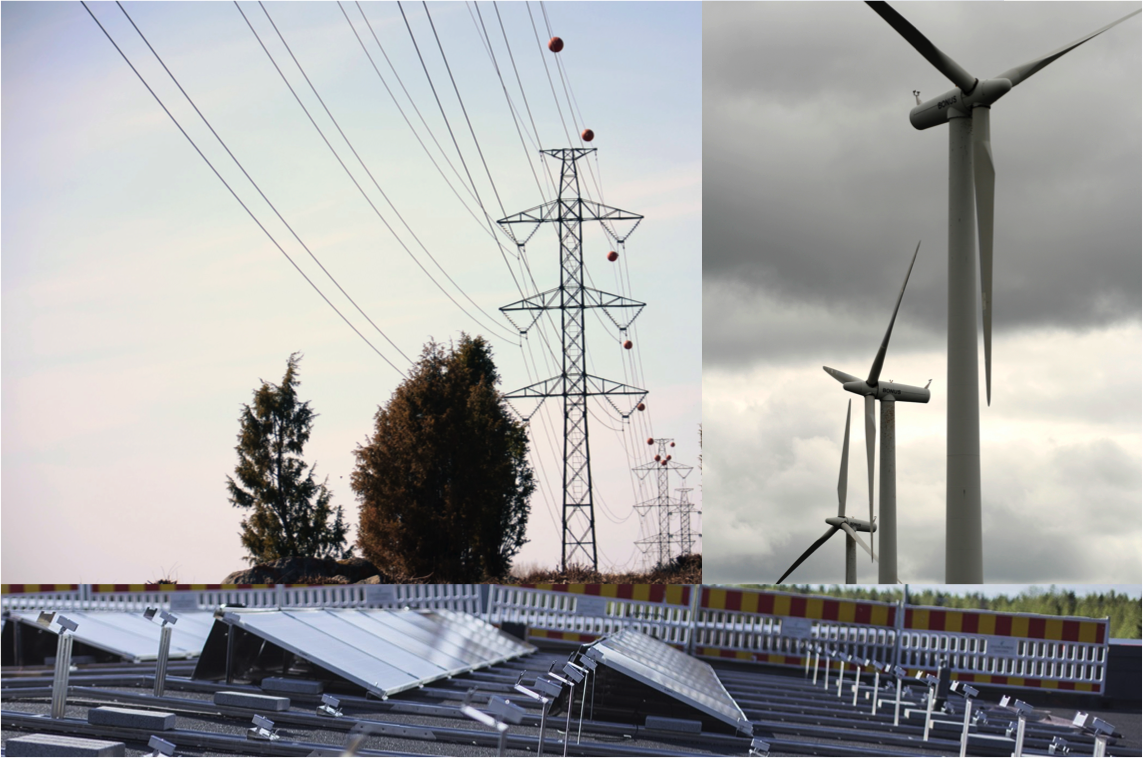The effort to switch from fossil fuels to clean and sustainable energy is an enormous effort and very intricate in all it details. Unsurprisingly this can lead to some misunderstandings and myths. Here are some of them. This blog was produced as part of the BCDC energy -project.
Too many wind and solar farms put are very risky for the stability of the power grid
The main renewable source: Wind and solar power, have a very volatile output. Sometimes they deliver power, sometimes they do not. This certainly limits how many renewables can be integrated in our current power systems. However we have yet to find out where these limits are. In the beginning it was thought that 10-20 percent renewables would be the maximum. Today Denmark is getting about 42 percent of its electricity [1] from renewable sources with some days where the whole country is powered by them [2]. Of course Denmark profits from its big neighbors Germany, Norway and Sweden, but it is remarkable nevertheless.
Renewables are all well and good but what we need is a storage technology
When it comes to storage, things are a bit more complicated. We have to differentiate between short term and long term storage. We have various ways to store energy for short amounts of time up to one day. Some of them, like batteries, are still under heavy development. The real challenge, however, is long term storage. There is plenty of sun in Northern Europe during the summer, but the energy is really needed during the winter.
One solution that is often overlooked, but in fact highly developed and reliable, is thermal storage. Instead of electric energy or chemical energy, one stores the energy in the form that is needed most during winter anyway: heat. Even better, heat storage can be used for short and long term storage.
We just have to adjust consumption to the price
The general idea of adjusting the consumption of a commodity according to its price seems very natural to us. Of course there are types of consumption we cannot easily adjust. If it is dark, then we need to turn on the light. However, there are plenty of things where the timing is much more flexible, turning the dishwasher or the washing machine on for example. Even heating can become very flexible with thermal storage.
However, the price of electricity in the spot market only tells a very limited story. In fact the price tells us what we forecast 36 hours ahead will be the most expensive energy source to use, in order to fill the forecasted demand. However, forecasting renewables like wind and solar for 36 hours is very hard. Therefore, the price does not reflect the real situation of production. Adjusting one’s consumption to the price can be misleading up to a point where it threatens the stability of the system.
We cannot power a modern economy with wind and sun
There are of course a lot of technical, economic and social challenges on the way to a 100 percent renewable system, and it is unclear if we can achieve it in the next decades. In terms of pure physics, however, it is very much possible. A study from the German space agency DLR [3] shows that in order to generate all the world’s electricity with the technology from the year 2005, a square of 250 times 250 km in north Africa would be enough [4]. We have the power, we have the technology, we just need to do it.
We should just use nuclear power
Leaving all the pollution problems aside, nuclear power is also running out of fuel. It is estimated that with current technology, uranium reserves will last about 230 years [5]. Keeping in mind that nuclear only accounts for 11 percent of the current electricity production, it might last longer than oil, but maybe not much. And let us not forget that depending on any kind of fuel source makes you dependent on the few countries that possess it.
The only long term solution that we can work on today are renewable energy sources, because then we only depend on the sun. And when it runs out of power, we need to leave anyway.
About the writer

Florian Kühnlenz
studied technical physics in Ilmenau, Germany. He is now a PhD student at the University of Oulu, Centre for Wireless Communications (CWC) working on models to understand the complexity and emergent behavior of the smart grid.
Florian Kühnlenz together with other CWC researchers contributes to BCDC Energy research project as BCDC Digital Team.
[1]
[2] https://www.theguardian.com/environment/2015/jul/10/denmark-wind-windfarm-power-exceed-electricity-demand
[3]
[4] https://upload.wikimedia.org/wikipedia/commons/e/ed/Fullneed.jpg
[5] https://www.scientificamerican.com/article/how-long-will-global-uranium-deposits-last/
This blog was produced as part of the BCDC energy -project.


